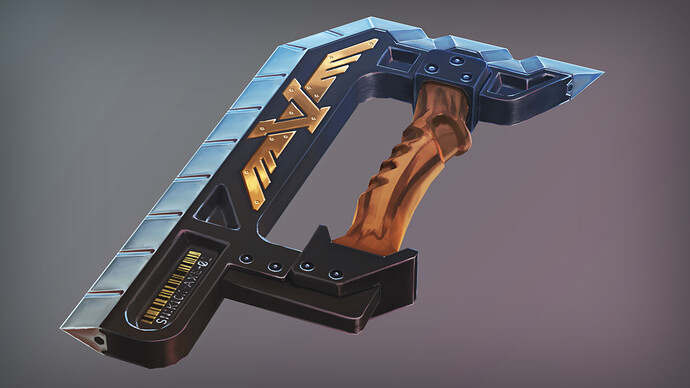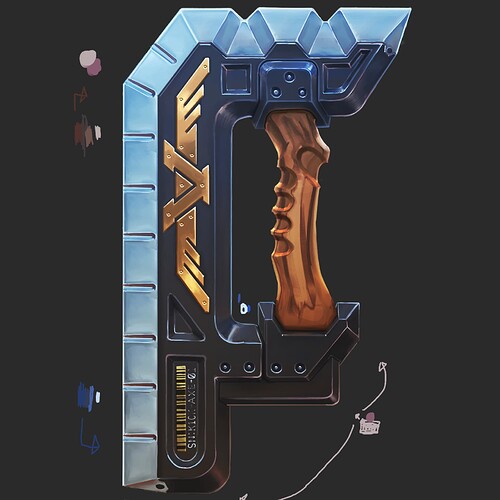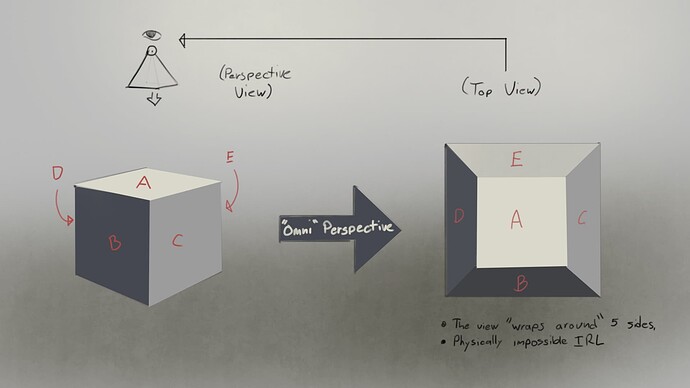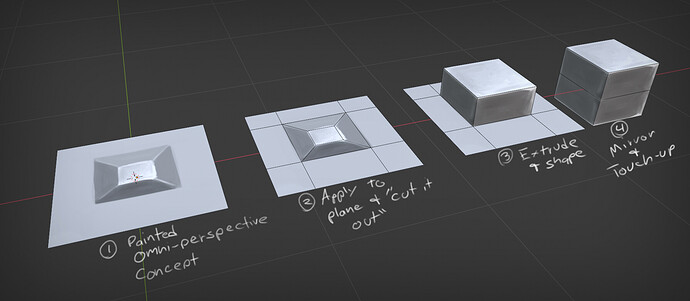Hello,
I am working through a new workflow I recently learned to quickly concept out low poly weapons and other objects. The first step is to draw and render the object in 2D, then apply the image as a texture on a plane, then extrude/shape/cut the concept from the plane, and finally mirror it. Optionally, you can do a touch-up using texture painting in Blender to hide any seams or warping. It works best on symmetrical and flat objects like a sword, a gun or a staff since you need to draw it in such a way that you can see every side of the object (except the very ‘back’ side). The benefit is that you do the concept/texture in one go and the modeling stage is relatively simple. Less time = more concepts :D.
I’m currently working on a set of weapons. Here’s the first one (a sort of war hand-axe):
Here’s the hand drawn concept I made before modeling it out:
Learning to draw in a sort of “omni-perspective” that wraps around to show all sides was a little weird at first, but I got the hang of it. Modeling it out was also a bit of a weird challenge since you need to cut the shape out of a flat plane and not distort the UVs too much.
I’m currently working on the second weapon in the set and will update later. Any feedback or criticism is really appreciated.




